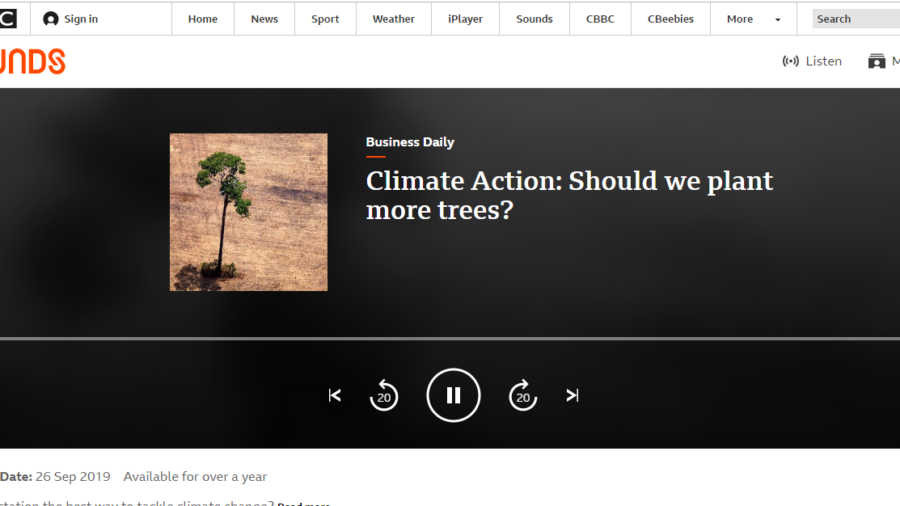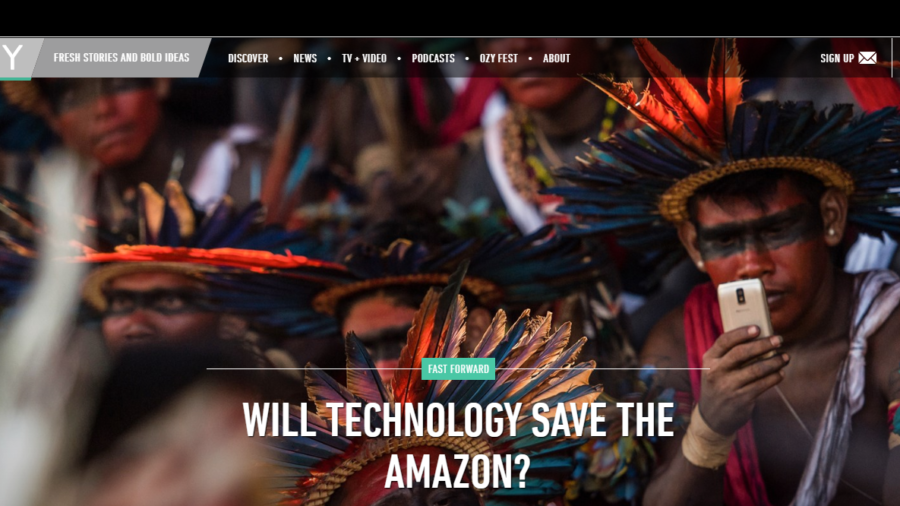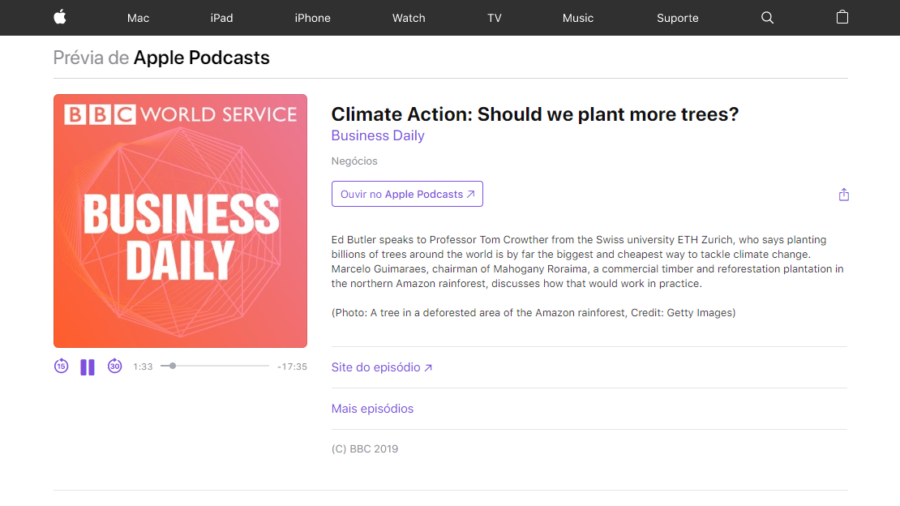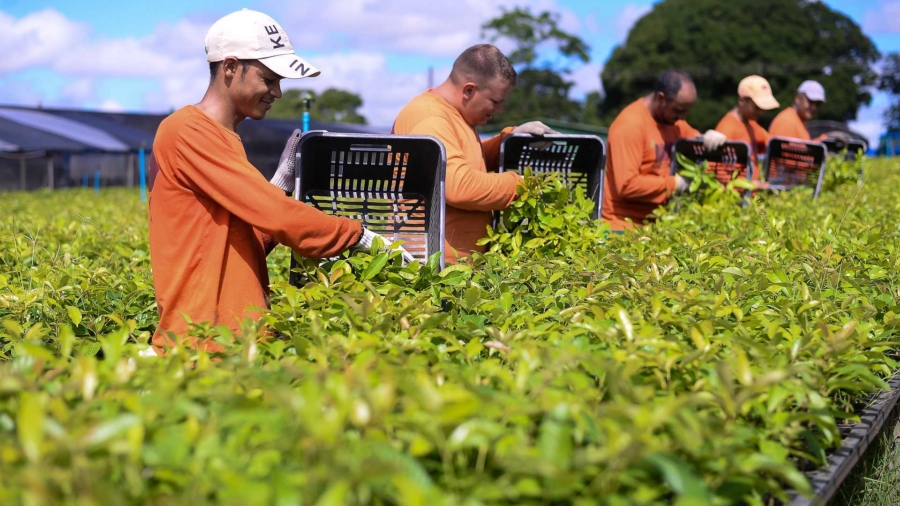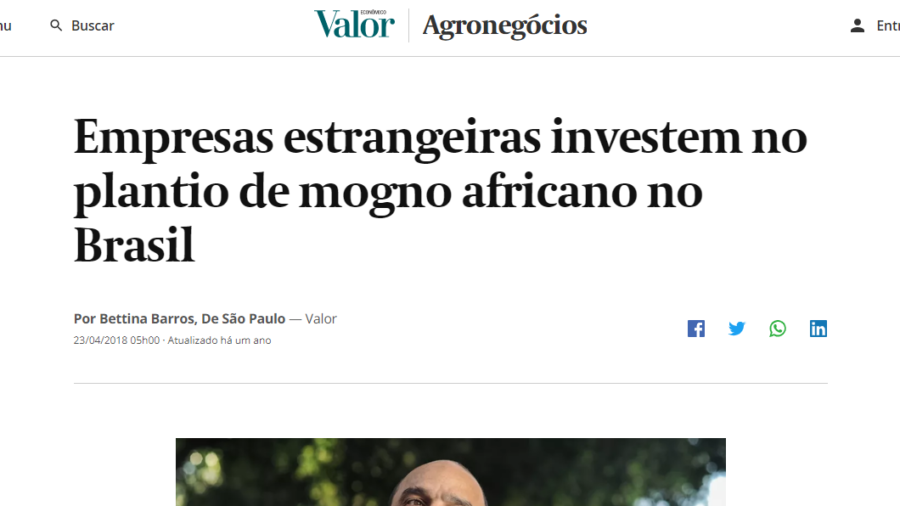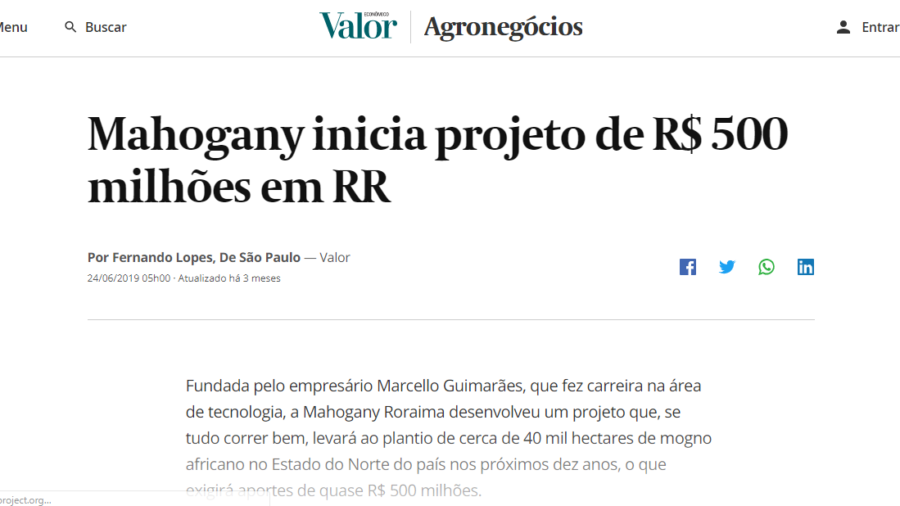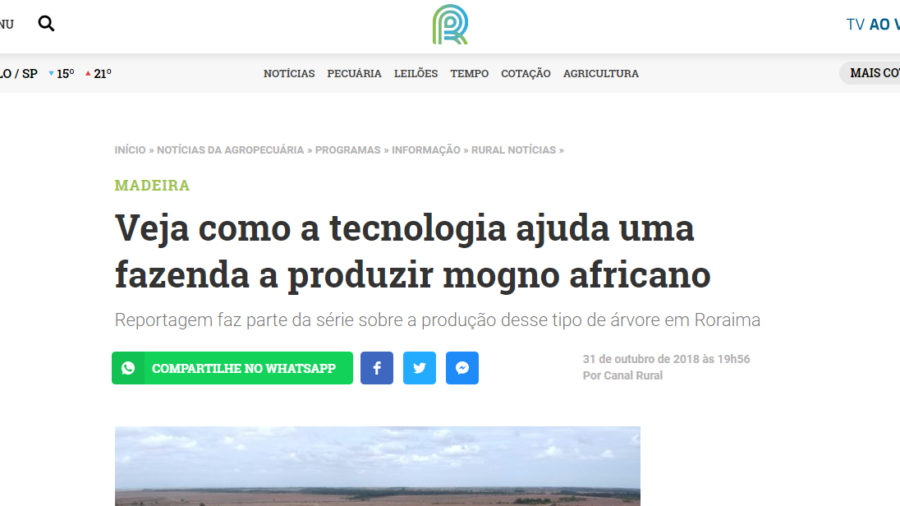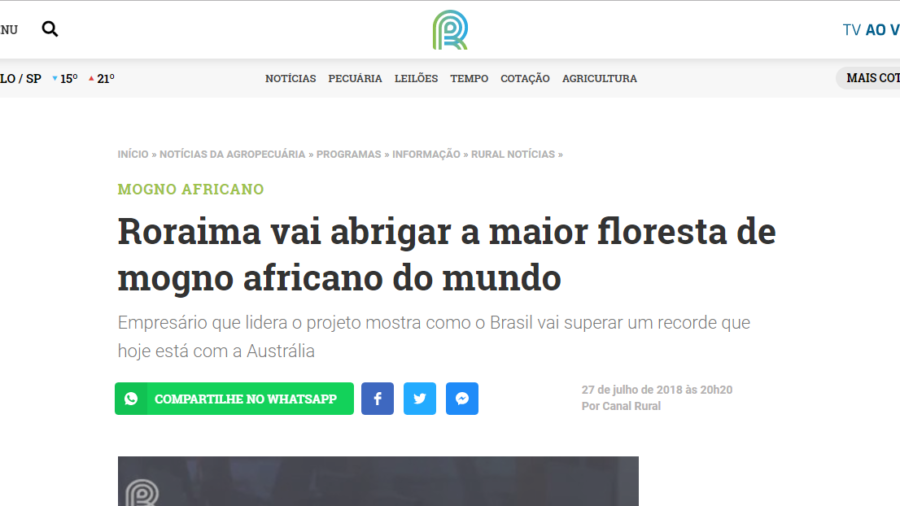Will technology save the Amazon?
WHY YOU SHOULD CARE
In their battle against deforestation, farmers and business people are turning to technology.
Smoke still billows above the Amazonian canopy as Jaime Sales clambers atop a stack of razed trees. “Victory!” he exclaims, letting his shotgun drop as he surveys the battered forest around him. At the vanguard of a small team of armed environmental enforcers, the corporal with Pará’s environmental military police unit has ventured deep into the jungle near Altamira in the northern Brazilian state, which has been the site of persistent conflict over deforestation.
Sales’ reward is the seizure of the massive illegal timber bounty — a haul he estimates to be worth “millions” of dollars on the black market, most likely in China, the United States or Europe, say experts. “Today was a good day, but these environmental crimes never stop. There is a lot of deforestation,” he says.
Such successes for Brazil’s environmental authorities are rare. Under far-right President Jair Bolsonaro, who is a keen advocate of opening up the Amazon to commercial interests, these groups have been chopping down and setting fire to trees with gusto.
Although far from a record, the trends this year have been alarming: Figures released last week showed that the rate of deforestation last month was 222 percent higher than the same month last year. By some estimates, a football field worth of forest is razed every minute.
“WE WILL UNLOCK A GIGANTIC AMOUNT OF NEW INNOVATIONS AND NEW INDUSTRIES THAT WE CAN’T EVEN DREAM OF.”
JUAN CARLOS CASTILLA-RUBIO, CHAIRMAN, SPACE TIME VENTURES
Bolsonaro and his allies see the rainforest as a natural resource that should be exploited — especially in a country that still has so many people living in or near poverty. They view international concern about the Amazon as an ill-disguised effort to hold back Brazil’s development by rich countries that have already trashed much of their own natural habitats. But the furor over Bolsonaro’s approach has also focused attention on the disparate community of scientists, businesspeople and activists who believe that technological advances could help tackle deforestation by making the conservation of land economically profitable.
They see the Amazon as the world’s largest repository of biodiversity and the potential foundation of a multitrillion-dollar bioeconomy, if scientists have the chance to harness the genetic codes of its diverse wildlife. “[With sequencing] we will unlock a gigantic amount of new innovations and new industries that we can’t even dream of,” says Juan Carlos Castilla-Rubio, chairman of Brazil-based Space Time Ventures, a technology company that works on biomass, energy and water risks.
Some scientists fear the world’s largest rainforest, which plays a vital role in absorbing carbon dioxide emissions and keeping a lid on rising global temperatures, could be approaching a tipping point, past which it will not have enough trees to maintain its water-recycling ecosystem.
So far, some 17 percent of the rainforest has been razed. Until recently, scientists believed that the tipping point would arrive when 40 percent of the Amazon had been destroyed. But Tom Lovejoy of George Mason University and Carlos Nobre at the World Resources Institute believe the scales could start to tip when just 20 to 25 percent of the rainforest has disappeared.
“Given the physics involved and what we see in terms of action around the world, I’m afraid there will be runaway climate change leading to catastrophes like major crop failures, water scarcity and social unrest,” says Castilla-Rubio. “You can’t predict when or where it will hit the worst, but the signs are all in the same direction, which is irreversibility.”
Castilla-Rubio’s group is using big data and satellites to help farmers improve the output of their land and reduce the need to expand their boundaries into the protected rainforest. One such project involves using satellites to pinpoint and classify particular types of weeds, which can then be targeted in surgical strikes by herbicide-wielding autonomous drones. “If you know precisely where and what the weeds are, you can use one-thirtieth the input of [polluting] herbicides,” Castilla-Rubio explains.
Similar technologies are being adapted across Brazil by farmers conscious both of environmental sensitivities and the importance of making farms more resilient to increasingly extreme weather. “We know we don’t have more earth to open,” says Edwin Montenegro, a macadamia nut farmer, who is using biofertilization techniques to improve the quality of his soil and crops.
Conservationists view the reforesting of illegally razed lands as an effective — but time-consuming, expensive and often futile — strategy against climate change.
“It is like a life system, an entire body. You have to make sure the heart, the stomach, everything is in the right position,” says Marcello Guimarães, chairman of Mahogany Roraima, a commercial timber plantation in the northern Amazon.
Guimarães believes farmers must be convinced of an economic benefit from adopting new technologies. Using satellites to monitor his plots, he aims to increase planting from approximately 500 acres a day to almost 250 acres an hour. “If we can develop this as a business, we can [compete] with the deforesters,” he says.
That view is shared by the Amazonas Sustainable Foundation, a nonprofit providing local communities with opportunities in the production chains of cacao, nuts and fisheries. “We get changes by making people realize they can improve their livelihoods by the sustainable use of resources,” says Virgilio Viana, CEO of the foundation, pointing to a 60 percent reduction in deforestation in the areas in which they work.
Viana worries that the encouraging signals being sent by Bolsonaro to illegal loggers make the work of nonprofit groups more difficult. The president has publicly attacked the Brazilian Institute of Environment and Renewable Natural Resources, and even accused nongovernmental organizations of being behind some of the fires in the Amazon region. “If the cost of illegality is reduced, it makes sustainable development less competitive,” Viana says.
Yet Luiz Carlos Lima, a federal public prosecutor in Roraima, an Amazonian state next to Venezuela, is optimistic that the situation in Brazil will improve as citizens become more aware of environmental crime and the risks of climate change.
“Brazil is a teenager right now. Europe is an old man,” Lima says. “Teenagers don’t respect the law.”
See the original article by clicking here.
Climate Action: Should we plant more trees?
Ed Butler speaks to Professor Tom Crowther from the Swiss university ETH Zurich, who says planting billions of trees around the world is by far the biggest and cheapest way to tackle climate change. Marcelo Guimaraes, chairman of Mahogany Roraima, a commercial timber and reforestation plantation in the northern Amazon rainforest, discusses how that would work in practice.
Listen the podcast clicking here.
The World’s largest African Mahogany Forest
Mahogany Roraima Forest – The World’s largest African Mahogany Forest
Foreign companies invest in African mahogany plantation in Brazil
African mahogany has entered the business radar of foreign companies that want to invest in the forestry sector in Brazil. Two outside groups are in talks to start commercial planting with the tree, which has been nicknamed “white gold” thanks to the promise of long-term income.
In very advanced negotiations, Greenwood Resources, controlled by the American fund TIAA-CREF, is in the process of securing its leadership in African mahogany production in Brazil. Focused on investments in forest assets, the company plans to sow 10,000 hectares of African mahogany in the Unaí region of Minas Gerais. Greenwood has partnered with a 15,000-hectare local producer and will work on the development model – that is, the company finances production without ownership. The law prohibits the acquisition of land by foreigners in the country.
Greenwood has set as a schedule the planting of one thousand trees per year, with an average investment of R $ 35 thousand per hectare in the total 20-year cycle of the plant. Sought by Valor, the company declined to comment on the matter.
Another multiple studying a joint venture with a Brazilian native and exotic commercial tree planting company is African Mahogany Australia – currently the world’s largest 14,000-hectare African mahogany producer in northern Australia. Conversations, however, are still at an early stage, as a person familiar with the business.
On its website, TIAA-CREF states that investments in forest assets are a way of diversifying the portfolio, as well as providing strong protection against inflation compared to other equities or fixed income investments. The US fund has about $ 1.8 billion invested in forests, with an area of 340,000 hectares in North, Central and Latin America and also Asia.
In Brazil, Greenwood positioned itself in the forestry market with the acquisition of BrasilWoods Reflorestadora, owner of 11 eucalyptus farms in Mato Grosso do Sul and supplier of wood to Fibria.
Small by planted forest standards – the estimate, far from being accurate, is 28,000 hectares planted against almost 8 million hectares of eucalyptus area – Greenwood’s mahogany input is the most striking of a number of projects with the wood that pop up in the country. In general, low-risk, low-risk, liberal-professional initiatives to wait for the long 20-year cycle until the first cut. The wait, they say, may be worth it: African mahogany’s sawn and dry cubic meter for export traded at € 1,000 (FOB) in Ghana’s port on April 15, according to the ITTO report.
“It’s a business that has been getting attention,” says Patrícia Alves Fonseca, executive director of the Brazilian Association of African Mahogany Producers (ABPMA) in Belo Horizonte. Like the psychiatrist and best-selling writer Augusto Cury, who has 600 hectares planted in Prata (MG) and Ricardo Tavares, former partner of 3Corações, with farms in northern Minas Gerais.
Recently planted in the country – the first seeds came from Africa in the 1970s – African mahogany is characterized by its high strength and reddish color. It is widely appreciated for the production of furniture abroad, especially in the US, the largest consumer market for this type of wood. And unlike native mahogany, the target of predatory exploitation in the past, logging of African species is permitted by law.
The bets of Brazilian producers come down to two varieties: senegalensis and ivorensis. Plantations, until then more concentrated in Minas, are rising to the Midwest and northern areas of the country. This migratory movement made ABPMA soon decide to open a new regional office in Goiás to map investments and organize the sector.
Mahogany Roraima is one of those companies that saw potential in the Brazilian state for the rapid scalability of this mahogany. In Amazonia, the competitive advantage is to do without irrigation, says Urano de Carvalho, a researcher at Embrapa Eastern Amazon.
Founded by Marcello Guimarães, an IT entrepreneur, the company operates in the Boa Vista region and will complete 1,200 hectares sown this year. He is looking for investors to make him the sole African mahogany producer in the country, with 24,000 hectares in ten years. The trees would be intercropped with other species, such as cocoa, acai and banana. “The rain regime is ideal and the land is the cheapest in Brazil,” says the executive about why he chose Roraima. This done, its average annual revenue expectation reaches R $ 326 million.
Another reason investors are thrilled is that African mahogany is being grown in strange habitat. This freed him from his largest natural predator, the robust Hypsipyla moth, facilitating forest management and reducing the cost of production.
Rodrigo Ciriello, a partner at Futuro Florestal, a reforestation and sale company for native and exotic tree seedlings in São Paulo, says that caution is still needed. The few trees that have ever been cut down (those still from the 1970s) remained in the domestic market. “We don’t have harvest data to know the actual yield or how much it will generate on export. It’s still a start.”
“The first large wave of African mahogany cuts in Brazil will be from 2030,” says Mauri Abud, who began planting in Tocantins. It will be 1,200 hectares. “It will be for the daughters-in-law to fight”, jokes (Press Officer, 4/23/18)
Access the news on the website that published it (in Portuguese): https://www.valor.com.br/agro/5473183/empresas-estrangeiras-investem-no-plantio-de-mogno-africano-no-brasil
Mahogany starts project with more than U$ 130 million in Roraima
Founded by entrepreneur Marcello Guimarães, who has made a career in technology, Mahogany Roraima has developed a project that, if all goes well, will lead to the planting of about 40,000 hectares of African mahogany in the country’s North State over the next ten years, which will require contributions of nearly R$ 500 million (+U$ 130 million).
Known for the creation of Visual Kit 5, which was one of Brazil’s best selling softwares, Guimarães arrived in Boa Vista in 2012. He raised pigs and cattle before betting on African mahogany, and is now accelerating the planting of new trees on land partners.
“We have recently completed the planting of 600 hectares in four days, and we are negotiating land with landowners in the region to increase the pace,” he told Valor. According to him, the project has been financed with the Forestry Replacement Credits that your company obtains with the planting and sells to those who need to compensate for deforestation.
According to Guimarães, the credits have been sufficient to finance investments of R$ 6 thousand per hectare, but the total cost for planting the area reaches R$ 17 thousand, and the trees only begin to be cut – and, therefore, to generate revenue – in 12 years.
“We are negotiating with investors from Brazil and abroad, but this is an always complex courtship,” he jokes. Meanwhile, he says, Mahogany has made agronomic agreements with Embrapa and universities and has been developing machinery to optimize planting work.
After sailing for 35 years in the waves of technology, Guimarães, with the African mahogany, affirms that it returns to the origins. Son of Marília Guimarães, a guerrilla who in 1970, with him and his younger brother, participated in the hijacking of an airplane and was exiled in Cuba, Marcello studied in an agricultural school on the island of Fidel Castro.
With its project in Roraima, it is eyeing a market that yields EUR 400 per cubic meter of African mahogany – whose average productivity reaches about 150 cubic meters per hectare – and could generate for the company an annual turnover between R$ 300 and R$ 400 million after sales start.
Access the news on the website that published it (in Portuguese): https://www.valor.com.br/agro/6316359/mahogany-inicia-projeto-de-r-500-milhoes-em-rr
Fafá Pereira travels to play two Jiu-Jitsu competitions in the USA
Roraimense goes in search of a historic career achievement and returns with the conquest of the Grand Slam.
Roraima fighter Fabiana Pereira, Fafá, traveled on the morning of Thursday (15). The destination is the city of Las Vegas in the United States. The athlete will play competitions in the American city: the North American Grappling Association (NAGA) and the IBJJF Jiu-Jitsu Championship World Master. Fafá goes in search of a historic achievement for Roraima, which is to win the title of both events and to close with a key in Gram Islam.
NAGA is the largest mixed grappling tournament circuit in the world, with over 700,000 competitors. On Saturday (17), the event returns to Las Vegas, Nevada. Children and adolescents will compete first and then will be followed by the adult divisions.
Next week, August 21-24, he will fight in the IBJJF World Master Jiu-Jitsu Championship, the World Championship. The roraimense will try the two-time championship of the International Brazilian Jiu-Jitsu Federation (IBJJF). If she wins this competition she closes the Grand Slam (when they win the four major competitions in the world) which will be a historic achievement for Roraima and Brazil as a female black belt Master.
Another historical achievement, but this one already won by Fafá Pereira, is the ceremony in which she will receive the IBJJF on August 24 for the first place in the world ranking. Two roraimens have already received the same honor: Luca ‘Hulk’ Daniel and Herbert Santos, in male. In the female category, Fabiana will be the first in the state, as black belt Master 1.
Fafá participated in 2018 of NAGA and won the belt of competition in the women’s black belt. This year will try to win again. She who is two years without losing a fight in any competition and remains unbeaten. The fighter spoke with Roraima in Tempo and spoke of the expectation of once again representing the state in world competitions.
“I thank all the people who support me and help me to participate in the competitions and who help to be always rising on the podiums and in the world ranking. I won the European Championship, the Panamerican and the Brazilian and I want the World Cup. So I will make several dreams come true. in this competition and achieving various goals, “he said.
The black belt also commented on the importance of receiving this great number one tribute from the world. “It is an important and grand title for our state and for sport and especially for women. It opens the door to this new generation that may be conquering and doing new things. I hope God will bless me with this achievement in my career.” I trained and prepared for this competition, I did my part and now let’s see what goes on “, he finished.
Access the news on the website that published it (in Portuguese): https://roraimaemtempo.com/ultimas-noticias/fafa-pereira-viaja-para-disputar-duas-competicoes-de-jiu-jitsu-nos-eua-,317091.jhtml
Fafá Pereira wins two international titles
Fafá Pereira of the Zenith North Academy participated in two jiu-jitsu competitions in Las Vegas, United States and was in the highest place of the podium twice. The first was the North American Grappling Association (Naga) on the 19th and the IBJJF World Championship on the 22nd. With the achievements, the athlete became the first female black belt in the state to win both titles.
The disputes of the World Cup end on Sunday, 26. Fafá recently arrived in Boa Vista and shared joy of winning the title.
“I made a very tiring trip over 24 hours. As soon as I arrived I was greeted by my family and friends at the airport. Everyone is proud and happy with my achievements, because everyone has followed my battles and helped in my training, ”he said.
“As I always say: nobody is nothing alone, alone nobody is nothing. Everyone has their share of contribution and these achievements are not only mine, but those of my family, staff, training colleagues, teachers, sponsors and all roraimens. The victory belongs to Roraima, ”he added.
For Fafá, the feeling is of accomplishment and does not hide the happiness by winning another title.
“The feeling is of accomplishment, that all sacrifice and work were successful. Knowing that you are on the right track and taking our state’s name to the top of the podium is the best feeling. The World Cup is the ultimate title of the BJJ, as if it were an Olympic medal. I have been six times world champion for another confederation, but nothing is compared to being world champion by the IBJJF, ”he said.
So far, there are six world titles by the Brazilian Confederation of Sports Jiu-jitsu. This, however, was the first for the Internation Brazilian Jiu-jitsu Federetion-IBJJF / Brazilian Confederation of Jiu-jitsu-CBJJ.
“This title has always been a dream. One of the few missing from my curriculum, and thank God and my teachers, friends, and sponsors, especially Mahogany Roraima, I was able to realize that dream. I hope that this will encourage more girls and women to seek their space in sport, ”said the athlete.
CAREER TITLES – Four-time world champion by CBBJJE; Five-time Brazilian Champion by the IBJJF; Three-time Pan American Champion; South American Champion; Four-time International Champion Master; Amazonese Multi-Champion; Multi-champion Roraimense; Open Champion Open IBJJF.
2018 – Summer Games Champion, Roraimense Category and Absolute Champion; Champion Amazonense category and Absolute; Champion Roraima open; Brazilian Champion Category and Absolute; Champion Cup Boa Vista Category and Absolute.
SUPPORT – Mahogany Roraima, Academy Overrun, Dr Maicon Jhone Dental Surgeon, Athos FW, Denner Sampaio Personal Traner.
See how technology helps a farm produce African mahogany
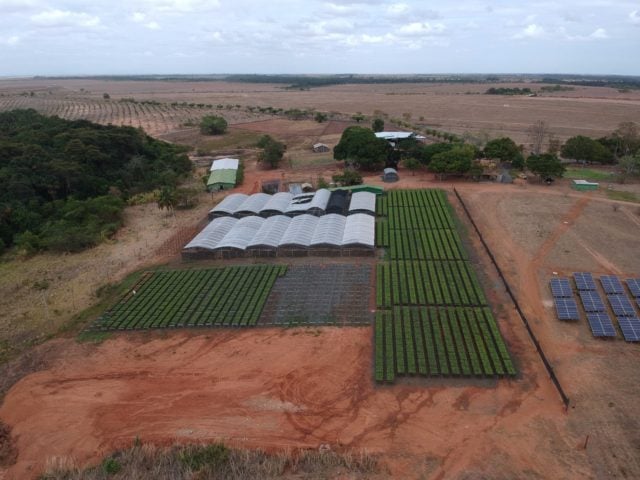
Entrepreneur Marcello Guimarães wants to plant the world’s largest African mahogany forest, about 24,000 hectares, in up to 10 years. Work on the Fazenda Recreio farm in Boa Vista (RR) already shows good results: five years ago, the planting occupied a modest 14 hectares. Now there are almost 500 acres.
The company’s goal is to revolutionize the wood production market in Brazil. “The expectation is that, in the next 36 years after planting, we will start selling wood to the US, Europe, China, etc.,” says Guimarães.
Computer programmer, Marcello bet on technology to increase production efficiency. Along with his brother, who is also in the area of computer science, he will invest R $ 487 million in the business. The expected turnover is R $ 11 billion in just over 30 years.
The pace of planting is also accelerating, with an average of 150,000 seeds per month. According to the forestry engineer Poliana Andrade, the differential in the work is that the seed quality the process of breaking dormancy. “After being planted in the tubes, they are sent home to germination. At the beginning of the process, they are irrigated. Then we cut the irrigation for 24 hours and then call again, “he explains.
From germination to planting in the field, the process lasts three months. According to Poliana, it is half the time the market takes (six months). Another difference is that the plants go to the planting already adapted to the reality of the state: smaller and thicker. “We have the wind issue very strong. They tend to fall less, “he says.
To boost the business, the recreational farm developed a system of partnership with landowners in the region, passing 20% of the wood to the landowner. “This means, in a thousand hectares of planted mahogany, a return of almost R $ 140 million,” says Guimarães.
Access the news on the website that published it (in Portuguese): https://canalrural.uol.com.br/programas/informacao/rural-noticias/veja-como-a-tecnologia-ajuda-uma-fazenda-a-produzir-mogno-africano/
Roraima Will Shelter The Largest African Mogno Forest Of The World
Roraima will have the largest African mahogany forest in the world. The goal is for Brazil to house more than 25,000 hectares of the species and surpass the record, which today is from Australia. The head of the project, the president of MahoGany Roraima, Marcello Guimarães, talks about the planting, technology and market of this tree.
Access the news on the website that published it (in Portuguese): https://canalrural.uol.com.br/programas/informacao/rural-noticias/roraima-vai-abrigar-a-maior-floresta-de-mogno-africano-do-mundo/

